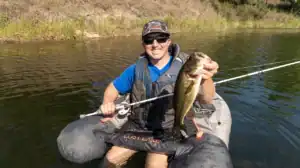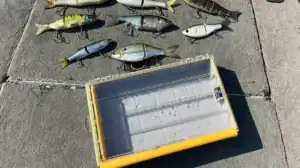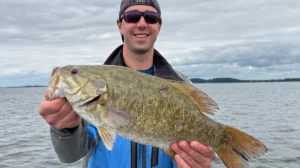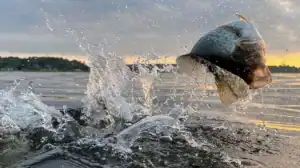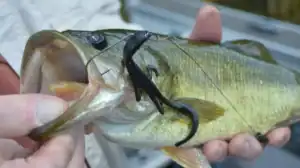New Yorkers need to be on the lookout for an out-of-towner. The northern snakehead might look like a native, but it’s straight from the waters of Asia. And Channa argus has the ability to outcompete native species for food, causing millions of dollars in management, plus potentially irreversible ecological damage.
The state’s Department of Environmental Conservation wants anglers to be on the lookout for snakeheads. And they ask fishermen to report catches through iMapinvasives, or to contact the local Partnership for Regional Invasive Species Management (PRISMS) office.

With similar characteristics to native bowfin (Amia calva) and burbot (Lota lota), don’t confuse the natives with the intruder. Northern snakeheads hail from China. They might all share dark coloring and an eye-catching long dorsal fin across the back, but the three species are entirely separate. The worst thing a recreational angler can do is release a snakehead they catch; instead take plenty of photos to help confirm its identity, and remove it from the waterway.
In New York, the first documented snakehead catch was reported in 2005 at Meadow Lake in Queens. Then again in 2008 in a stream in Wawayanda, New York. At the time, nearby Ridgebury Lake was treated with the pesticide rotenone to kill off any other snakeheads in the area, according to the state’s Bureau of Invasive Species. More recently, in August of 2021, an angler caught a northern snakehead in Bashakill Marsh in Wurtsboro, Sullivan County.
New York prohibits the possession, sale or transportation of live snakeheads within the state. Still, that’s likely how the species made its way into area waters – via the aquarium trade or a fish market releasing specimens into waterways. Anglers can unintentionally move fish from one body of water to another too, often by dumping unused baitfish at a boat ramp. Snakeheads of any size have the ability to survive out of water for a limited time, thanks to a primitive lung.

More than two decades after its first sighting in a Crofton, Maryland pond, the range of the northern snakehead has spread north to New York, south to Virginia, and across the Chesapeake Bay to Maryland’s Eastern Shore, says the U.S. Fish & Wildlife Service. They’ve also been documented in several other states, including but not limited to Missouri, Arkansas, California, Florida, Illinois, Massachusetts, Pennsylvania and North Carolina.
Northern snakeheads might be most abundant in the Chesapeake Bay watershed. Certain areas of the Potomac River, such as its tributaries in Virginia and Maryland, are hotspots. Although the species cause havoc with local ecosystems, anglers are fighting back by targeting, harvesting and eating them. The snakehead is an elite predator, but also a fantastic food fish.
A tip about snakehead fishing: Look to the backwaters. Those shallow, marshy areas are where they thrive and put their hunting skills to good use – attacking fish, frogs, crustaceans, reptiles, mice, and maybe even small birds. They prefer slow-moving to stagnant waters, plus they can survive winters and low oxygen levels. Not surprisingly, bowfins are often caught in the same environments since mudfish can breathe oxygen via an air bladder rich with blood vessels.
In the US, there are four recorded species of snakeheads: northern snakehead, giant snakehead (Channa micropeltes), bullseye snakehead (Channa marulius), and blotched snakehead (Channa maculate). The northern snakehead has succeeded in establishing breeding populations. So has the bullseye snakehead in southern Florida. New York is asking anglers to step up to help prevent their spread and establishment before it’s too late.


